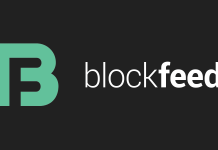Sift a Smart Blockchain Trading and Managed Investment Portfolio. If you would like to trade cryptocurrencies but you would like to entrust some one else to do it on your behalf. Sift may be the right soluiton for you. Guy Powell co-founder of Sift, explains more about this fund.
What are the objectives of the fund?
Ultimately to maximise profit for holders of SIFT. We aim to do this by building up a large investment fund that continues to grow over time. Initially we are limiting our investment to a select few cryptocurrency pairs that we have substantial market data about. We are building up our platform to also analyse and trade pairs that are not tied to fiat currencies (i.e. BTC/ETH rather than BTC/USD). As volumes in these pairs has increased over time our algorithms have become much better at profiting from moves. Whilst we’re not ready to risk investor money trading these pairs at this time we aim to grow the fund to a point that we can trade all high-volume crypto pairs whether based in a fiat currency or not. It is important to note that we have promised SIFT-holders that they will have a vote on any future investment decisions we make – if we propose opening up trading in a new currency it must be subject to an agreement by a majority of SIFT holders that vote.
The algorithms used where originally created from stock market is this interopable crypto?
Originally these algorithms started as standard volume spread analysis and were targeted at the forex markets. In that time we’ve also used them to trade indices, commodities and

stocks. Some of the customers of Smart Trader (the standalone trading algorithm product that SIFT came from) solely trade commodities or stocks. The algorithms work exceptionally well in any market that has large amounts of volume and “smart money” – big investors that determine market swings. In the early days of crypto the volumes weren’t high enough that we felt our algorithms offered a high enough win-rate to be acceptable (we aim for at least 75% on signals that we trade on and many are far higher) – or spreads were too large. Over the last couple of years volumes have increased substantially, traditional brokers are offering crypto feeds and our algorithms have also been tailored for these markets. This has led us to the point where our core trading signals (we call them catalyst signals) have win-rates that match our forex charts but, generally, with a higher profit margin per trade due to the heavy fluctuations in the forex markets.
Have these algorithms been back-tested on these markets? What where was the achieved ROI on these tests?
We have volume data for pairs starting from 2013. Every time we tweak any of our algorithms we regenerate what is known as our “expectation of movement” data. This data looks at every bar over the whole history of our trading data and looks calculates win-rate, average profit, target profit, maximum losses (where a signal fails) and risk weighting. We perform this analysis for all of our signals, trading pairs and on every possible chart timeframe so that we can build up a wide ranging view of how successful these algorithms are. We can comfortably generate an ROI of 40% per annum for investors being very selective with the trades that we make – and this is after management fee is charged.
With large price fluctuations recently how have your algorithms performed?
With the same win-rates as usual. Our systems detect moves in the market before most investors get in – this tends to happen from the marketmakers that define price direction. This has meant that we’ve not only seen some excellent trades that our AI systems have also advised that we went in to but we’ve also seen a lot of potential signals from our analysis that our AI system has suggested we avoid due to unknown risks. It’s the combination of both our proprietary signals and the AI analysis that helps support our decisions that allow our trades to work even in traditionally adverse conditions. That being said we often do not trade in such markets. SIFT plans to trade in a risk-averse fashion and we believe there is plenty of profit to be made without taking additional risk. If we were certain on a move we would take it but normally we would let a market settle down before re-engaging with trading activities.
What kind of AI is used in your systems?
We recently posted about this on Reddit: https://www.reddit.com/r/icocrypto/comments/6oqz2t/company_with_10_year_trading_history_launch/dkkzec5/
How much of the human in the loop will there be when executing trades?
Every trade will be decided-upon and executed by a human. We may place stop-losses or take-profits on trades to automatically close us in certain scenarios but generally every trade is human executed. We see the charts with our signals drawn on each bar. When a bar closes the AI system provides some additional information – it may suggest that despite a signal being present other market indicators suggest it isn’t wise to trade it. A really basic example of this (and something not too proprietary that we cannot share) is a weakness signal. If we get a very strong weakness signal that would normally be a certain trade but it’s come after an extended down-move our system will advise against taking it as we may be reaching the bottom of the market. There are dozens of AI advisor warnings that help make decisions along with proprietary support and resistance levels and the trading signals themselves – but ultimately all decisions are taken by a human trader. This information is all factored in and then the profile of the trade (how much to invest from the maximum risk-weighted amount, for how long and with what closing profile) is decided and the trade executed. We never take a trade without a signal and we never take a trade against our AI’s recommendations – it’s more that we validate our system rather than overrule it. It’s this combination if human expertise with our AI system that leads to our high win-rates.

Will the founders be involded in the day to day operations?
Yes – our founders will be involved in day to day operations. We’re not just throwing money at this but living it ourselves and plan to continue to do that. Any additional staff that get bought on to support the fund will be hand-trained by the founders in their respective areas.
Will there be fees incurred each time the funds are moved from FIAT to Crypto and vice versa? Will this take place every Friday and Monday?
This very much depends on individual cryptopairs. Whilst signals don’t get confirmed until a bar closes we can see the next bar forming and its AI alerts in advance. This allows us to get funds in place to execute a trade. The foundation of our model is that when a trade is not in place (or being prepared for or closed) all funds are kept in fiat. This ensured that the fund value isn’t susceptible to the fluctuations of crypto itself – imagine had we kept a week-long supply of BTC last week. We execute funds through a number of platforms – some of which are traditional forex brokers (with whom we have directly deposited USD or other fiat currencies) whilst others are standard exchanges such as Kraken and Poloniex. In the case of crypto exchanges we’ve got a couple of options here – one is purchasing and transferring in a cryptocurrency and the other is the use of USDT. There are fees involved in these transactions which is already factored into the projected ROIs. To minimise the fees we will be aiming to do the following:
- Where pricing levels and spreads are sufficiently accurate trading a portion of the investment on a traditional forex platform that can hold a balance in USD
- Where possible use USDT as a currency that is held for longer periods of time as crypto so that we are less liable to crypto fluctuations
- When we have a very high certainty trade that we would (for example) allocate 100,000USD to we may trade with 10x margin on 10,000USD so that the actual cost price of the crypto we are purchasing for the trade would be lessened relative to the margin
What are the succession plans for the management team?
We are looking at taking on trading staff and technical staff once the fund has launched and train these directly from the management team. We are also looking to opening up the management team and board as the fund grows with a view that the fund will continue to operate long into the future. We see this fund as part of a wider operation under Logical Trading Systems Limited that will see our existing Smart Trader product, SIFT and future developers form one of the leading market analysis firms in the years to come.
How are the fees structured?
Months that have no profit incur no fees. Months with profit incur the minimum of 1.5% of the total fund value or 15% of that month’s profits – whichever is lower. At the start of the fund we’re also charging 15% of investment amount as a one off operations cost. This operations cost will, in effect, act like a loan from SIFT-holders to the business. We will take no management fee until this 15% initial operations cost has been repaid – meaning that each dollar invested is a dollar that the investor can ROI on. An example calculation can be found at the following link but please note the constant fixed-percentage monthly growth figures are purely indicative: https://docs.google.com/spreadsheets/d/16BQS3VPRp_lAyYuOw2sXyZHk8NIE_F5Xz-XXPVXyiZk/edit#gid=0
How will Sift use the management fees?
Primarily these will be used for running costs – staffing, operations, infrastructure, etc. Some of this will also be reinvested in to the development of the crypto platform. As mentioned in the response to your first question we are looking at growing our offering to handle crypto-crypto trading pairs and ultimately any crypto asset. This will see a significant growth in our architecture to support the volume of incoming tick data from numerous different exchanges so that they can all be sufficiently aggregated. A large amount of our management fee will be reinvested for this purpose.
Will the smart contracts be audited?
We do not plan on an external audit – however we have published them on the blockchain along with the source code and had this validated so that the community is welcome to perform their own scrutiny. There are numerous contracts that interact, however we have separated these out in to separate contracts to make testing, deployment and future upgrades easier.
What are the benefits of holding sift tokens?
Monthly dividends and an increasing NAV – the estimated annual ROI is 40% split equally between these two portions. SIFT-holders will also receive voting rights on any major changes in the future direction of the fund.
When and how will the ICO take place?
From August 1st until September 15th on the Ethereum network. Investors will send ETH to our ICO contract and will then be allocated SIFT accordingly. We have a Windows client application to aid investors during their purchase as well as instructions on how to invest using MyEtherWallet.
What will be the structure of ICO?
There are no pre-sales, no retained SIFT for marketing or bounties and no SIFT held by the company. 100% of tokens will be owned by investors. Each SIFT will cost 0.01 ETH. The total amount of SIFT we can issue is unlimited. ETH raised during the ICO is held in escrow by the smart contract itself. At the end of the ICO period we can either confirm we’re happy to commence trading and release the raised ETH to our business (at which point SIFT activates and becomes freely tradable) or we can abort the ICO and all ETH will be returned to investors.
Where can readers find more info on Sift?
Our website at https://SmartIFT.com contains more information and we highly recommend taking a look at our whitepaper.
We thank GuyPowell for the interview.












